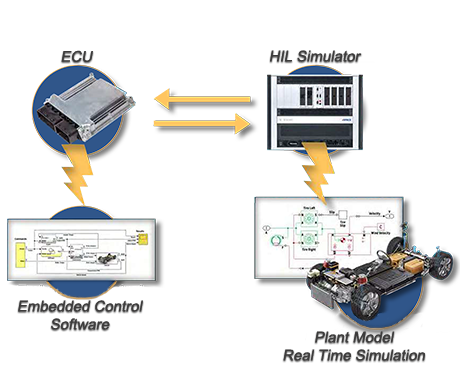The global game engines market is undergoing rapid transformation, driven by surging demand for interactive digital content, technological advancements, and a diversified gaming landscape. With game development expanding beyond traditional platforms into mobile, AR/VR, and cloud environments, the industry is poised for significant growth over the next five years. The global game engines market size is expected to reach USD 11,615.51 million by 2032, according to a new study by Polaris Market Research.
Market Overview
Game engines are essential software frameworks used for creating video games, offering core functionalities such as graphics rendering, physics simulation, scripting, and sound management. These engines allow developers to build games for various platforms, including consoles, mobile devices, and PCs. As digital gaming becomes increasingly mainstream, game engines are not just tools for entertainment but also essential in sectors like education, simulation, architecture, and virtual training.
The market is broadly categorized into 2D and 3D game engines. While 2D engines continue to serve casual and retro-style games, the 3D segment commands a dominant share due to the rising expectations for visually immersive, high-fidelity experiences powered by real-time rendering.
Key Growth Drivers
1. Growth of Mobile and Cross-Platform Gaming
The explosive growth of mobile gaming has transformed the industry. With billions of smartphone users globally, developers are focusing on cross-platform development to reach broader audiences. Game engines that support development across Android, iOS, PC, and console platforms are highly sought after, allowing seamless deployment and synchronized updates across ecosystems.
2. Advancements in AR/VR Integration
Augmented Reality (AR) and Virtual Reality (VR) have become major catalysts for innovation in gaming and beyond. Modern game engines are being optimized to enable AR/VR integration, creating highly interactive and immersive environments for gamers. These technologies are not only transforming how users engage with games but are also opening up new applications in real estate, healthcare, and education.
3. Rising Demand for Real-Time Rendering Capabilities
As consumer expectations shift toward hyper-realistic graphics and seamless performance, real-time rendering has become a crucial component of modern game engines. This capability allows developers to visualize changes instantly, enhancing development efficiency and user engagement. High-performance rendering is especially vital in competitive gaming and simulation-heavy applications.
4. Surge in Indie Game Development
The democratization of game development tools has led to a surge in indie game development. Game engines with user-friendly interfaces, flexible pricing models, and strong community support are empowering individual creators and small studios. These indie developers contribute significantly to the diversity and innovation in the gaming market, often producing niche titles that achieve commercial and critical success.
𝐄𝐱𝐩𝐥𝐨𝐫𝐞 𝐓𝐡𝐞 𝐂𝐨𝐦𝐩𝐥𝐞𝐭𝐞 𝐂𝐨𝐦𝐩𝐫𝐞𝐡𝐞𝐧𝐬𝐢𝐯𝐞 𝐑𝐞𝐩𝐨𝐫𝐭 𝐇𝐞𝐫𝐞:
https://www.polarismarketresearch.com/industry-analysis/game-engines-market
Market Challenges
Despite promising growth, the game engines market faces several pressing challenges that could temper expansion:
High Development Costs
Licensing advanced game engines and securing the necessary hardware infrastructure can be cost-prohibitive, especially for startups and independent developers. AAA-level tools and features often come with premium fees, which may restrict access for smaller studios.
Technical Complexity and Learning Curve
While game engines are becoming more accessible, mastering them still requires a blend of artistic creativity and technical expertise. Developers must be proficient in scripting, 3D modeling, and engine-specific languages, which can be a barrier for newcomers.
Device Fragmentation
The diverse hardware landscape poses a significant challenge to game engine developers. Ensuring compatibility and optimization across various devices—ranging from high-end gaming PCs to low-spec smartphones—requires extensive testing and adaptation.
Intellectual Property (IP) and Licensing Issues
With the increasing ease of publishing games, the risk of IP theft and licensing violations also rises. Developers must navigate complex copyright laws and ensure the originality and legality of in-game assets and code.
Regional Analysis
Asia-Pacific
Asia-Pacific leads the global game engines market, accounting for the largest revenue share. The region's dominance stems from a robust mobile gaming ecosystem, government support for tech startups, and a large, tech-savvy population. Countries such as China, Japan, South Korea, and India are major contributors, with several homegrown gaming studios adopting advanced engines for both local and global markets.
North America
North America maintains a stronghold in the premium segment of the market, thanks to the presence of industry giants and a thriving indie development scene. The region is a hotspot for cutting-edge technologies like VR gaming, cloud streaming, and esports infrastructure. High consumer spending on entertainment and digital services also boosts demand for sophisticated game engines.
Europe
Europe has a diverse and vibrant gaming community, with strong representation in both AAA and indie development. Countries such as the United Kingdom, Germany, France, and Sweden are home to several influential game development studios. Regulatory support for digital innovation and education in game design further bolsters regional growth.
Latin America, Middle East, and Africa
These regions are emerging players in the game engines market. Growth is driven by increasing internet penetration, improving smartphone accessibility, and a rising youth population interested in gaming. As infrastructure improves, these markets are expected to offer significant growth opportunities, especially in mobile and browser-based games.
Key Companies in the Game Engines Market
Several prominent players are shaping the global game engine landscape. These companies are distinguished by their product features, developer support ecosystems, and market adoption:
Unity Technologies
Unity is a leading force in both mobile and indie game development. It offers a highly accessible platform known for rapid prototyping, cross-platform support, and an extensive asset store. Its widespread use in educational settings and smaller studios gives it a unique edge.
Epic Games (Unreal Engine)
Unreal Engine is renowned for its advanced rendering capabilities and photorealistic graphics. It is widely used by AAA studios for console and PC gaming, as well as in industries like film, architecture, and simulation. Its recent updates continue to push boundaries in realism and performance.
Crytek (CryEngine)
CryEngine is known for its superior visual fidelity and realistic environmental rendering. Although more niche than Unity or Unreal, CryEngine is the choice for developers focusing on complex physics and expansive, detailed worlds.
Godot Engine
Godot is an open-source game engine rapidly gaining popularity among indie developers. Its intuitive design, modular architecture, and zero-cost licensing make it a go-to solution for small teams and solo creators seeking creative freedom without financial overhead.
YoYo Games (GameMaker Studio)
GameMaker Studio is a 2D-focused engine that appeals to beginners and hobbyists. Its drag-and-drop interface and integrated scripting language allow for the quick development of simple yet engaging games.
Amazon (Lumberyard)
Amazon's Lumberyard targets multiplayer and cloud-connected games, offering seamless integration with AWS services and Twitch. Though still developing its user base, it’s a promising engine for studios aiming to build socially interactive titles.
Future Outlook
The future of the game engines market is marked by greater accessibility, enhanced realism, and convergence with emerging technologies. As AI-driven features, machine learning algorithms, and procedural content generation become mainstream, game engines will continue evolving to meet the demands of both developers and players.
Furthermore, partnerships between engine developers and hardware manufacturers will improve optimization and performance, especially in areas like cloud gaming and AR/VR. As the barriers to entry continue to lower, expect even more creators to enter the space, adding to the vibrancy and diversity of the global gaming ecosystem.
Conclusion
The game engines market is entering a golden era of growth and innovation. With increasing adoption across regions and a dynamic mix of indie and enterprise-level development, the market is set to reshape not only the future of gaming but also the broader realm of digital experiences. Companies that invest in versatility, community support, and technological integration will be best positioned to lead in this highly competitive and creative landscape.
The global game engines market is undergoing rapid transformation, driven by surging demand for interactive digital content, technological advancements, and a diversified gaming landscape. With game development expanding beyond traditional platforms into mobile, AR/VR, and cloud environments, the industry is poised for significant growth over the next five years. The global game engines market size is expected to reach USD 11,615.51 million by 2032, according to a new study by Polaris Market Research.
Market Overview
Game engines are essential software frameworks used for creating video games, offering core functionalities such as graphics rendering, physics simulation, scripting, and sound management. These engines allow developers to build games for various platforms, including consoles, mobile devices, and PCs. As digital gaming becomes increasingly mainstream, game engines are not just tools for entertainment but also essential in sectors like education, simulation, architecture, and virtual training.
The market is broadly categorized into 2D and 3D game engines. While 2D engines continue to serve casual and retro-style games, the 3D segment commands a dominant share due to the rising expectations for visually immersive, high-fidelity experiences powered by real-time rendering.
Key Growth Drivers
1. Growth of Mobile and Cross-Platform Gaming
The explosive growth of mobile gaming has transformed the industry. With billions of smartphone users globally, developers are focusing on cross-platform development to reach broader audiences. Game engines that support development across Android, iOS, PC, and console platforms are highly sought after, allowing seamless deployment and synchronized updates across ecosystems.
2. Advancements in AR/VR Integration
Augmented Reality (AR) and Virtual Reality (VR) have become major catalysts for innovation in gaming and beyond. Modern game engines are being optimized to enable AR/VR integration, creating highly interactive and immersive environments for gamers. These technologies are not only transforming how users engage with games but are also opening up new applications in real estate, healthcare, and education.
3. Rising Demand for Real-Time Rendering Capabilities
As consumer expectations shift toward hyper-realistic graphics and seamless performance, real-time rendering has become a crucial component of modern game engines. This capability allows developers to visualize changes instantly, enhancing development efficiency and user engagement. High-performance rendering is especially vital in competitive gaming and simulation-heavy applications.
4. Surge in Indie Game Development
The democratization of game development tools has led to a surge in indie game development. Game engines with user-friendly interfaces, flexible pricing models, and strong community support are empowering individual creators and small studios. These indie developers contribute significantly to the diversity and innovation in the gaming market, often producing niche titles that achieve commercial and critical success.
𝐄𝐱𝐩𝐥𝐨𝐫𝐞 𝐓𝐡𝐞 𝐂𝐨𝐦𝐩𝐥𝐞𝐭𝐞 𝐂𝐨𝐦𝐩𝐫𝐞𝐡𝐞𝐧𝐬𝐢𝐯𝐞 𝐑𝐞𝐩𝐨𝐫𝐭 𝐇𝐞𝐫𝐞: https://www.polarismarketresearch.com/industry-analysis/game-engines-market
Market Challenges
Despite promising growth, the game engines market faces several pressing challenges that could temper expansion:
High Development Costs
Licensing advanced game engines and securing the necessary hardware infrastructure can be cost-prohibitive, especially for startups and independent developers. AAA-level tools and features often come with premium fees, which may restrict access for smaller studios.
Technical Complexity and Learning Curve
While game engines are becoming more accessible, mastering them still requires a blend of artistic creativity and technical expertise. Developers must be proficient in scripting, 3D modeling, and engine-specific languages, which can be a barrier for newcomers.
Device Fragmentation
The diverse hardware landscape poses a significant challenge to game engine developers. Ensuring compatibility and optimization across various devices—ranging from high-end gaming PCs to low-spec smartphones—requires extensive testing and adaptation.
Intellectual Property (IP) and Licensing Issues
With the increasing ease of publishing games, the risk of IP theft and licensing violations also rises. Developers must navigate complex copyright laws and ensure the originality and legality of in-game assets and code.
Regional Analysis
Asia-Pacific
Asia-Pacific leads the global game engines market, accounting for the largest revenue share. The region's dominance stems from a robust mobile gaming ecosystem, government support for tech startups, and a large, tech-savvy population. Countries such as China, Japan, South Korea, and India are major contributors, with several homegrown gaming studios adopting advanced engines for both local and global markets.
North America
North America maintains a stronghold in the premium segment of the market, thanks to the presence of industry giants and a thriving indie development scene. The region is a hotspot for cutting-edge technologies like VR gaming, cloud streaming, and esports infrastructure. High consumer spending on entertainment and digital services also boosts demand for sophisticated game engines.
Europe
Europe has a diverse and vibrant gaming community, with strong representation in both AAA and indie development. Countries such as the United Kingdom, Germany, France, and Sweden are home to several influential game development studios. Regulatory support for digital innovation and education in game design further bolsters regional growth.
Latin America, Middle East, and Africa
These regions are emerging players in the game engines market. Growth is driven by increasing internet penetration, improving smartphone accessibility, and a rising youth population interested in gaming. As infrastructure improves, these markets are expected to offer significant growth opportunities, especially in mobile and browser-based games.
Key Companies in the Game Engines Market
Several prominent players are shaping the global game engine landscape. These companies are distinguished by their product features, developer support ecosystems, and market adoption:
Unity Technologies
Unity is a leading force in both mobile and indie game development. It offers a highly accessible platform known for rapid prototyping, cross-platform support, and an extensive asset store. Its widespread use in educational settings and smaller studios gives it a unique edge.
Epic Games (Unreal Engine)
Unreal Engine is renowned for its advanced rendering capabilities and photorealistic graphics. It is widely used by AAA studios for console and PC gaming, as well as in industries like film, architecture, and simulation. Its recent updates continue to push boundaries in realism and performance.
Crytek (CryEngine)
CryEngine is known for its superior visual fidelity and realistic environmental rendering. Although more niche than Unity or Unreal, CryEngine is the choice for developers focusing on complex physics and expansive, detailed worlds.
Godot Engine
Godot is an open-source game engine rapidly gaining popularity among indie developers. Its intuitive design, modular architecture, and zero-cost licensing make it a go-to solution for small teams and solo creators seeking creative freedom without financial overhead.
YoYo Games (GameMaker Studio)
GameMaker Studio is a 2D-focused engine that appeals to beginners and hobbyists. Its drag-and-drop interface and integrated scripting language allow for the quick development of simple yet engaging games.
Amazon (Lumberyard)
Amazon's Lumberyard targets multiplayer and cloud-connected games, offering seamless integration with AWS services and Twitch. Though still developing its user base, it’s a promising engine for studios aiming to build socially interactive titles.
Future Outlook
The future of the game engines market is marked by greater accessibility, enhanced realism, and convergence with emerging technologies. As AI-driven features, machine learning algorithms, and procedural content generation become mainstream, game engines will continue evolving to meet the demands of both developers and players.
Furthermore, partnerships between engine developers and hardware manufacturers will improve optimization and performance, especially in areas like cloud gaming and AR/VR. As the barriers to entry continue to lower, expect even more creators to enter the space, adding to the vibrancy and diversity of the global gaming ecosystem.
Conclusion
The game engines market is entering a golden era of growth and innovation. With increasing adoption across regions and a dynamic mix of indie and enterprise-level development, the market is set to reshape not only the future of gaming but also the broader realm of digital experiences. Companies that invest in versatility, community support, and technological integration will be best positioned to lead in this highly competitive and creative landscape.









